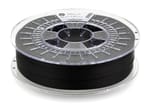With its heavy use of plastics, 3D printing can sometimes get a bad rap. While many companies try to push the sustainable benefits of 3D printing – and indeed there are many recycled and sustainable filament options – the hard truth is that hobbyist 3D printing results in a lot of plastic waste.
To mitigate this waste, many companies push the fact that plastics are technically recyclable and some are biodegradable. What they often leave out is how you recycle them and how long it takes for them to decompose so they don’t end up sitting in landfills for hundreds of years. And don’t get us started on the plastic spools the filaments come in (although they can also be repurposed).
Amid all of this potential waste, a few companies stand out with products that are truly biodegradable and can even be composted by 3D printing enthusiasts themselves. Before we get to our picks, let’s get some trash out of the way.
Isn't All PLA Biodegradable?
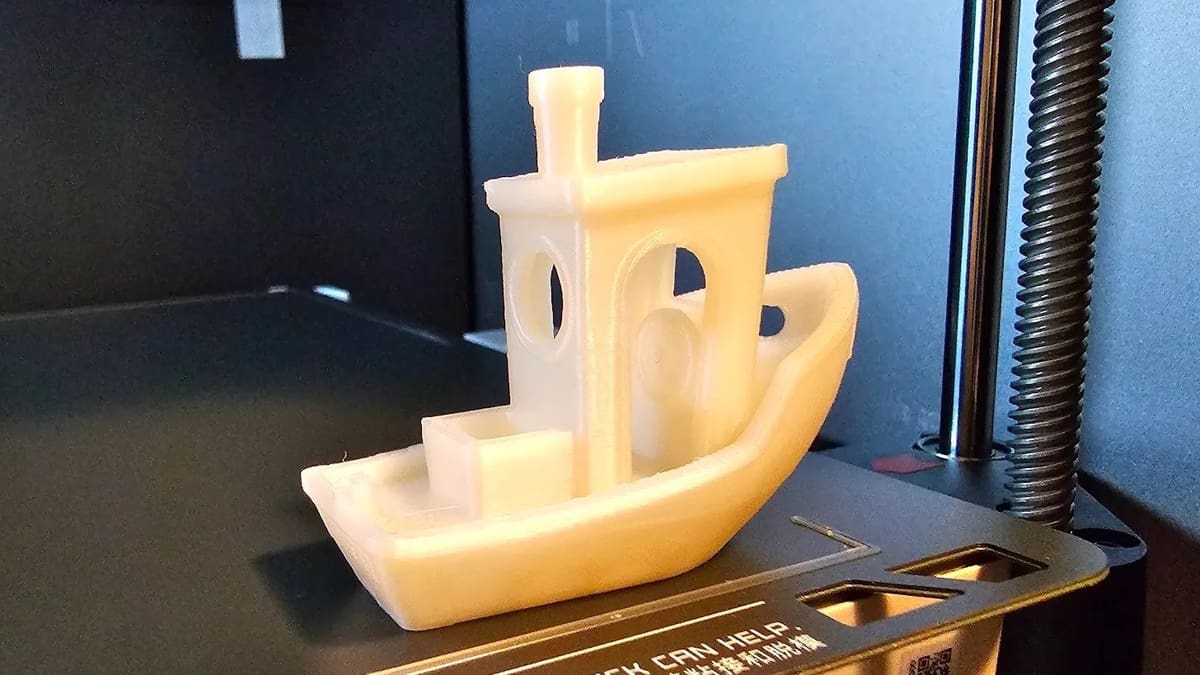
If you’ve been 3D printing for a while, you’ve definitely heard or seen brands pushing that PLA (the most popular filament material because of its ease of printing, accessible cost, and variations) is biodegradable because it’s a bioplastic. We can and have gone over this topic at length, but here’s what it boils down to.
For normal PLA filament to biodegrade and decompose, it must be in a uniquely controlled environmental setting or industrial recycling machine. It’s not something that can be tossed into your backyard composter or curbside blue bin for most municipal recycling programs. Trying to recycle or compost PLA yourself will leave you waiting hundreds of years for it to break down.
Naturally, claims of biodegradability or sustainability that require so much time to come true have left the 3D printing community rather frustrated. Some, like Stefan at CNC Kitchen, have taken to testing different filament’s claims themselves to show how poorly most PLAs break down.
Luckily for us, a select few filaments are actually backing up their biodegradable claims. Before we look at our picks, let’s go over a few general considerations if you’re looking to 3D print with any of them.
What About PHA?
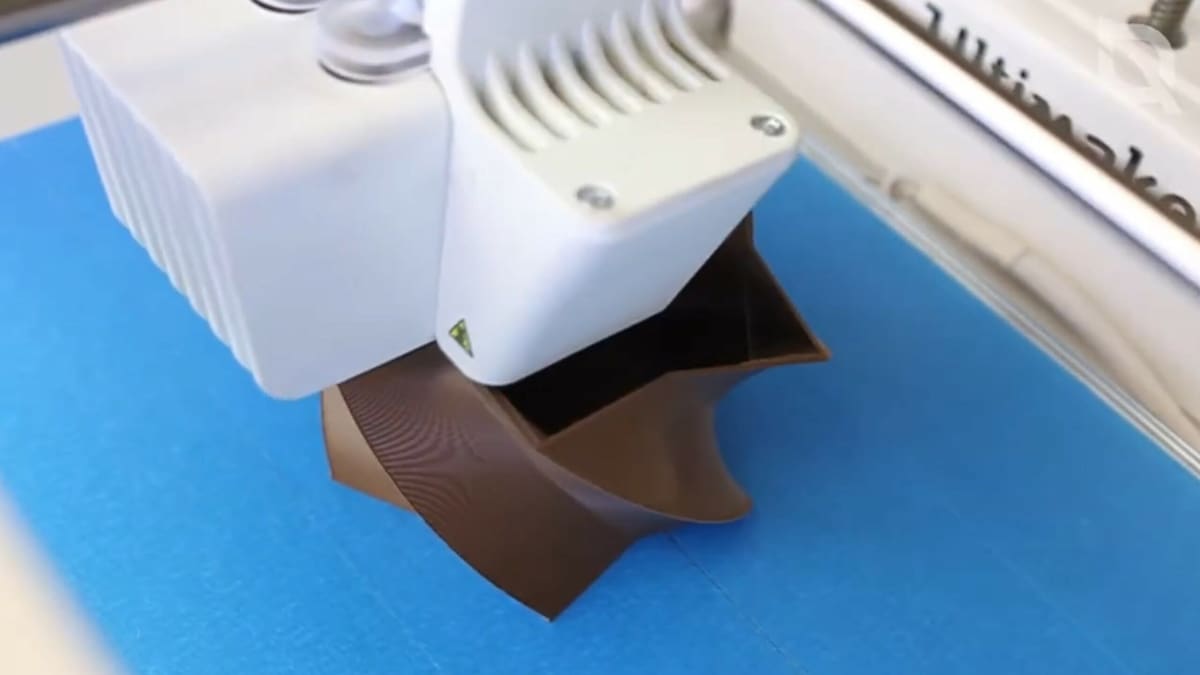
Filament biodegradability is a bit of a gray area, especially when it comes to how long it takes for a material to compost. Most biodegradable filaments are made from PHA (Polyhydroxyalkanoate). PHA stands out from other plastic filaments due to its superior biodegradability and production through a biological fermentation process involving microorganisms. In simple terms, specific strains of bacteria feed on renewable raw materials like sugars and plant oils and turn them into PHA. While PHA-printed parts can technically decompose naturally in soil, marine environments, and industrial composting facilities, it’s not advisable to throw failed prints into marine ecosystems.
And a distinction must be made between PHA and PLA/PHA blends, as the latter, because of the PLA composite, requires the previously mentioned industrial recycling facilities.
Other than its eco-friendly properties, PHA filaments offer easy printability. Because of their relatively low melting temperatures and thermal stability, they shouldn’t easily warp, even on non-heated print beds. However, as with any filament, warping can still occur depending on a variety of factors. To be on the safe side, you might want to use adhesives such as glue sticks or a brim (the latter is especially useful if you want to be extremely careful about composting possibilities).
PHA filaments print well on both Bowden and direct extrusion systems. However, direct extrusion setups are generally preferred as they offer better control over filament retraction and extrusion, reducing the likelihood of stringing. And because PHA filaments don’t contain abrasive particles, a standard brass nozzle should work well. That said, if you frequently switch between different types of filaments, especially more abrasive ones like carbon fiber-filled or metal-filled filaments, consider using a hardened steel or ruby-tipped nozzle for durability.
There are mixed opinions on the post-processing of PHA prints, with some claims that acetone smoothing should work but others pointing out that (for the PLA/PHA blend), results are lacking. Additionally, if you want to paint the model with non-biodegradable paint, composting won’t be possible. If biodegradability is a top priority, a good middle ground is to use biodegradable post-processing materials, such as eco-friendly paints and biodegradable adhesives.
With all this out of the way, let’s take a look at our top picks for biodegradable filaments (note that we sorted by them by price).
Beyond Plastic PHA
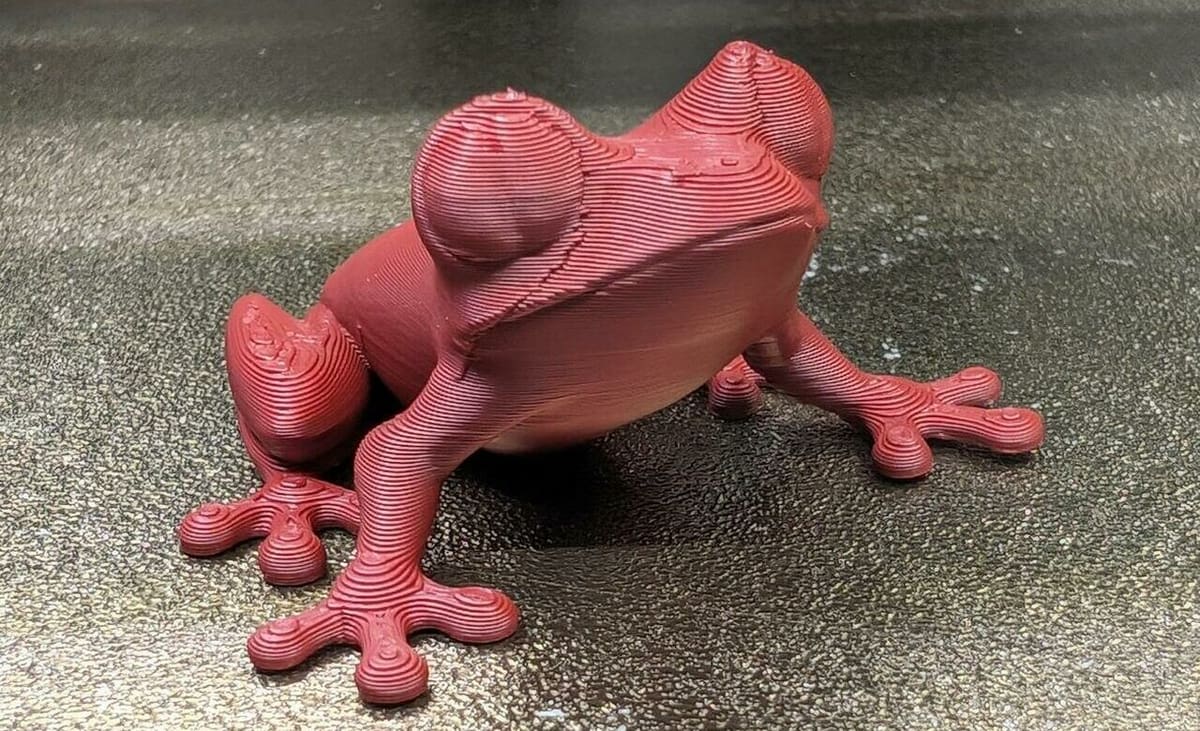
Beyond Plastic’s mission is to reduce plastic waste and promote the use of biodegradable and renewable materials. The American manufacturer takes things a notch higher by using not one, but several biopolymers to make their biodegradable filaments. The filament spool is also made from recycled paperboard.
The company offers two lines of PHA filament, which are the second generation of the product. Standard PHA is easy to use and most suitable for strong, rigid parts, which makes it ideal for everyday objects and prototypes. Flex PHA is more challenging to print but offers flexibility similar to TPU, making it suitable for applications requiring elasticity and durability. In addition to the spools, they offer up to three sample boxes (the price depends on the number of samples), so that you can try out the material and colors.
For both types, printing requires a cool bed and a fan to prevent warping (a brim or adhesive is also recommended, and a textured bed isn’t). The prints usually come out strong and sturdy, able to withstand temperatures beyond 120 °C. In addition, low warping and strong layer adhesion ensure consistent, high-quality prints with impressive surface finishes.
This filament can compost in a bin at your home and even degrade naturally should it end up in a landfill.
- Colors: Black, gray, marine blue, natural, orange, red, white
- Size: 1.75 mm
- Recommended nozzle temperature: 195-205 °C
- Price per kg: ∼$30 (600-g spool for ∼$20)
ColorFabb allPHA
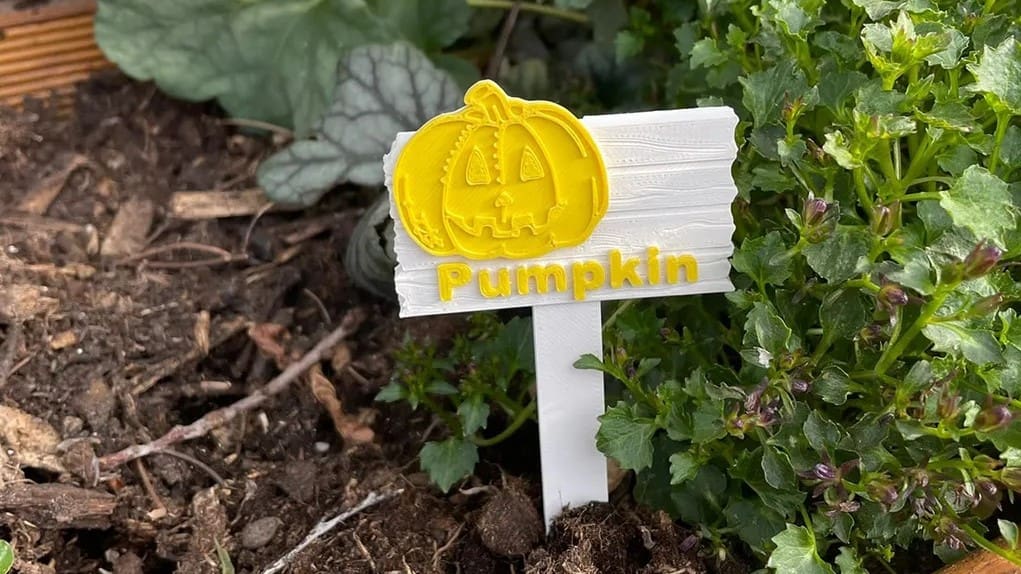
Dutch manufacturer ColorFabb is no stranger to sustainable filaments. Since its inception in 2011, the company has strived to reduce its carbon footprint by making filaments with renewable resources, such as Vibers PLA, which includes elephant grass. Their latest innovation is allPHA (pronounced “alpha”) and it’s the first of its kind.
The filament is made from PHA and contains no microplastics. In addition, it comes on a cardboard spool, making the entire product 100% biodegradable. ColorFabb’s allPHA can compost at home, taking approximately 30 days to degrade, depending on the thickness of the print and other factors such as heat, moisture, and microbial activity in its surroundings.
It has few color options, as it comes in only black, white, and a light brown shade. If this is a deal breaker, ColorFabb’s PLA/PHA blend have more color varieties (although, as mentioned before, the PLA composite means it’s no longer compostable at home).
Printing with allPHA is usually a breeze because it offers good layer adhesion and minimal warping (although that will depend on the model), making it suitable for both beginners and experienced users. The prints are significantly tough and can withstand high temperatures of up to 120 °C. For best results, you might want to opt for printing with a fan on and on a cool bed because heating crystallizes the PHA, which can lead to warping. Still, it’s a win-win because you end up with excellent prints while saving the power that would have heated the bed.
- Colors: Black, white, natural
- Sizes: 1.75 mm, 2.85 mm
- Recommended nozzle temperature: 195-220 °C
- Price per kg: ∼$40 (750-g spool for ∼$30)
NonOilen

Fillamentum’s PHB-based NonOilen is made from a combination of PLA and PHB that can be composted at industrial compost and electric composters (which is great, if you happen to have one at home). The tradeoff for its compostability is that it’s only available in one color of filament, as Fillamentum doesn’t use any dyes with NonOilen.
If you don’t compost in your own home, Fillamentum also offers a program where you can send the filament and spool back to them. They’ll then recycle it in their industrial machine where it’s broken down into biomass, water, and CO2. According to Fillamentum, NonOilen’s degradation occurs three times faster than standard PLA and there are many satisfied reviews online supporting this claim.
- Color: Natural silky white
- Sizes: 1.75 mm, 2.85 mm
- Recommended nozzle temperature: 175-195 °C
- Price per kg: ∼$55 (750-g spool for ∼$40)
Extrudr GreenTEC Pro
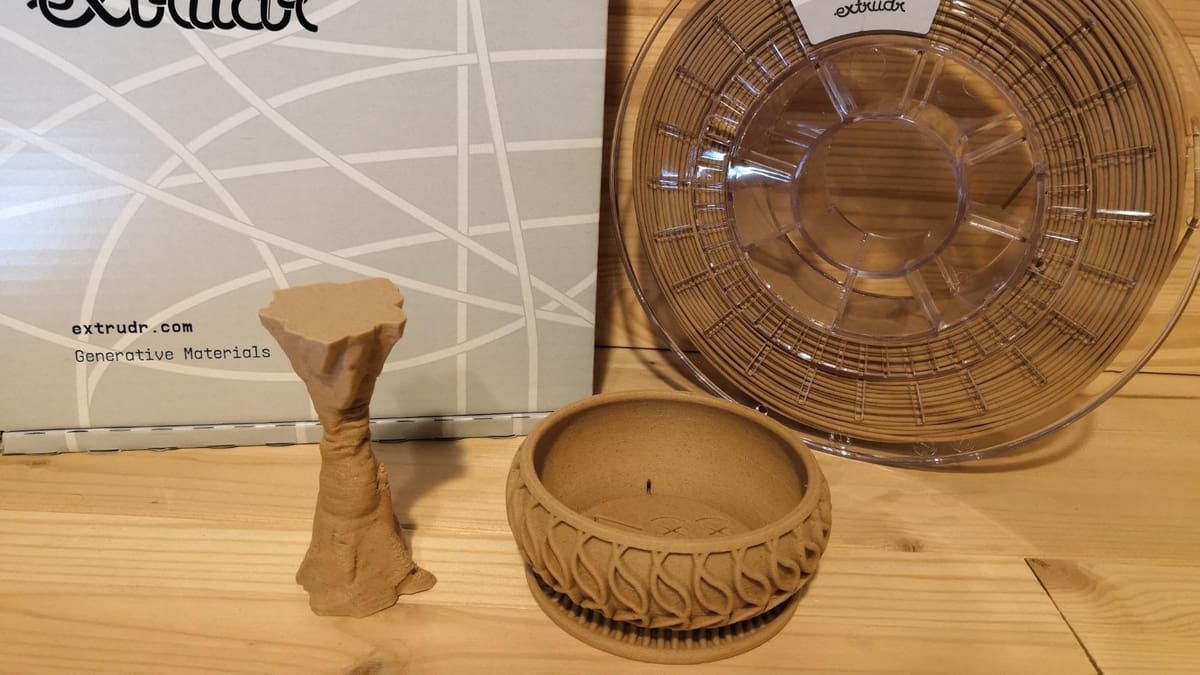
Extrudr GreenTEC Pro is a bio-based filament designed in Austria for professional applications requiring high strength, durability, and sustainability. It’s part of Extrudr’s GreenTEC series, which focuses on environmentally friendly materials.
This filament line is made from 100% renewable and biodegradable raw materials. It can withstand temperatures up to 160 °C and it claims great impact resistance and layer adhesion – all of which makes sense, given that Extrudr developed the series for ultra-high performance applications. And for more aesthetic prints, seven colors are available. It’s worth noting that a heated bed is necessary (20-90 °C).
In addition to the Pro series, they offer a wood filament (pictured above), which is also made from renewable raw materials, although it’s not as heat or impact resistant. This material is offered in two colors (dark and light).
These filaments are biodegradable according to DIN EN ISO 14855, a standard that measures how fast compost microorganisms can break down the plastic into carbon dioxide, water, and biomass. It takes about 180 days for it to decompose to almost 90% of its original mass under industrial composting facilities. That said, home composting isn’t recommended due to slower decomposition rates.
- Colors: Black, gray, blue, red, white, silver, beige
- Sizes: 1.75 mm, 2.85 mm
- Recommended nozzle temperature: 210-230 °C
- Price per kg: ∼$56 (800-g spool for ∼$45; 2.5-kg spool for ∼$140; 5-kg spool ∼$280; 10-kg spool for ∼$560)
Compost3D
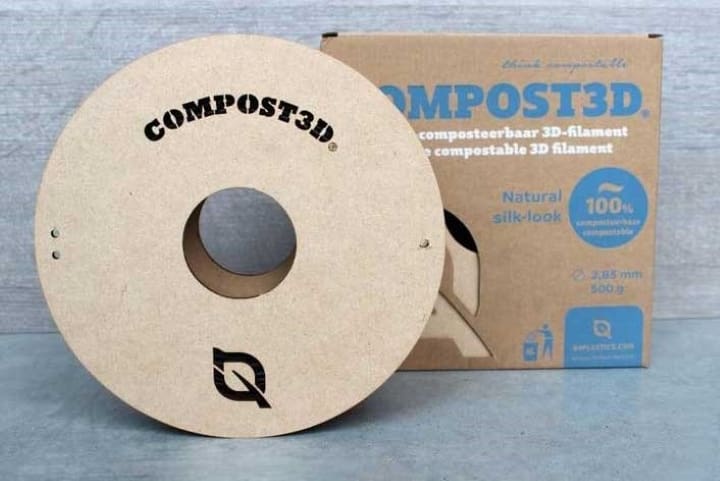
B4Plastics might not be a name 3D printing enthusiasts are as familiar with. That’s because they’re not a filament manufacturer, but rather a polymer architecture company that specializes in creating new forms of plastic. One such plastic project is Compost3D.
B4Plastics advertises Compost3D as the first filament whose decomposition can be tracked on a smartphone and whose composting time can be calculated before the object has started printing. As with most plastics, the compost time is by no means fast, though better than traditional PLA. B4Plastics estimates that 0.25 mm of Compost3D filament will take 3 months to decompose and 1.5 mm will take between 12 to 18 months.
- Colors: White, brown, green
- Size: 1.75 mm
- Recommended nozzle temperature: 190-220 °C
- Price per kg: Contact B4Plastics
License: The text of "Best Biodegradable 3D Printer Filament Brands" by All3DP is licensed under a Creative Commons Attribution 4.0 International License.
CERTAIN CONTENT THAT APPEARS ON THIS SITE COMES FROM AMAZON. THIS CONTENT IS PROVIDED ‘AS IS’ AND IS SUBJECT TO CHANGE OR REMOVAL AT ANY TIME.





